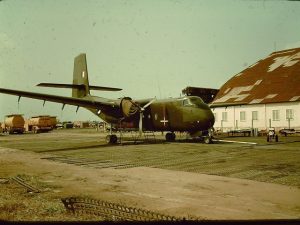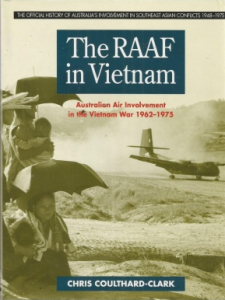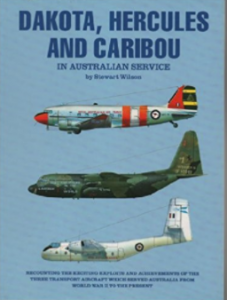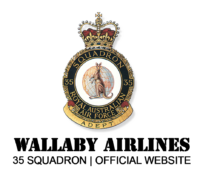RAAF CARIBOU A4-171’s LAST FLIGHT

The only thing unusual about this Wallaby 006 mission on the 30th August 1967 was that an Australian army colonel, Colonel White, had made a request to be a passenger for the day. Apparently he had a day off from duties at Nui Dat and decided to, as he joked.
“See what you RAAF blokes are doing to help the war.”
The plane left Vung Tau with P/O Alan Aiken at the wheel. The CO, Squadron Leader Fookes was in the right hand seat. Fookes had a three part role that day: overseeing Alan Aiken’s first flight as pilot since his return from the Cameron Highlands of Malaysia where he had been recuperating from an illness; performing his usual flying duties as rostered; and escorting Colonel White for the day.
At Tan Son Nhut airport in Saigon we dropped off the Vung Tau/Nui Dat passengers and took on the personnel and cargo travelling that day. The Wallaby 006 flight’s main purpose was to take passengers and mail from Saigon down through the delta region, the rice bowl of Vietnam, to the island of Phu Quoc (situated off the coast of Cambodia) and return in the afternoon. A secondary purpose was to supplement the daily Wallaby flight from Vung Tau to Saigon and back.
The US Movement Control helped us load the US mail and ticked off the list of passengers permitted to take the flight. The Vietnamese mailman loaded his mail on board. He always travelled with the mail to ensure it was off-loaded at the correct town. And to take on new mail posted to Saigon. He was of small stocky stature with a pleasant disposition.
The loadmaster Alan ‘Rocky’ Hudson oversaw the positioning of the cargo and the passengers. As assistant loadmaster, I helped load it in and strap it down. (somewhere during our travels in Vietnam Rocky and I discovered we had both attended the same state school, Eric Street, North Cottesloe, WA albeit at different times – Rocky was several years older than myself).
Our second stop out of Tan Son Nhut, was Long Xuyen, a pot holed strip appearing not much bigger than a cricket pitch. Two Australian doctors dressed in white clambered aboard. They were going on holidays from Saigon. The shortest way to Saigon from there was around the traps on the Wallaby. Over the coastline, across the stretch of ocean to Duong Dong, half way up the west coast of Phu Quoc Island. It was a green beret base.
Next stop, down to the southern tip of the island, lunch at An Thoi. An Thoi had US naval facilities, including a large support service vessel anchored permanently off the base. An Thoi also housed several US Army units. The most sought after trip to An Thoi was on a Friday when the navy served up seafood, including Clam Chowder.
Since our flight was over the sea and of a relatively short distance, the pilots usually chose to fly at about 500 feet. No chance of snipers and why waste fuel going to any height. The weather was intermittent squalls from a flat cloud cover at about 500 feet. We flew just below the cloud ceiling. We coasted down over the water past numerous islands that usually looked picture postcard. However, with the low grey cloud today the water was dark.
As we approached the base on the downwind leg I walked up towards the front of the aircraft telling the 14 passengers to fasten their seatbelts. I returned to my seat down the rear and strapped in. The strip was made of pierced steel planking (PSP) interlocked to form a firm support on beach sand. It could take most medium sized aircraft. It stretched from near the ocean‟s edge towards a large sand hill. The usual approach was from the sea. We turned onto the base leg and I started to think of lunch. Often enough I watched the wheels of the undercarriage to see whether the pilot was going to ‘grease’ the landing or going to drop it down from a height. But today I couldn’t be bothered. I sat staring at the pile of mail opposite me.
We turned onto finals and the landing commenced. It was a rough one. The wheels seemed to clatter along for some distance much louder than usual. Caribous can land in a very short distance which was the norm, and then a fast taxi to the exit ramp. This landing was long and noisy. And then a sudden jolting stop. I sat there sucking in my breath relieved that we were down.
Until suddenly sea water started gushing up through the floor!
I unbuckled my belt and jumped up to press the two toggle switches that operated the ramp and the cargo door. Nothing happened. The batteries, which are housed under the floor, were swamped. I jumped back to the yellow and black handle that released the port side entry door. The plane was starting to list to port. It just stayed locked in its hole by the water pressure. I pulled the cargo door release handle and watched in horror as it came away from its hinges but stayed floating blocking the rear exit which was already under water.
The water was rising rapidly. I looked back towards the front to Rocky who yelled at me to pull the starboard side door handle. I had to stretch up by this time to reach it. Pulled it. Nothing happened. The door stayed right where it was. The two Australian doctors, who had wasted no time in getting down to the rear of the aircraft, stood behind me pushing me, shouting desperately for me to do something.
It suddenly occurred to me that the door was only held in place by gravity because by now the plane was listing severely to port. I got the two doctors to push me upwards towards the door and when within reach I punched out with my fist. The door went flying. The three of us scrambled out into the ocean. The plane had stopped sinking leaving a triangle of air inside down the length of the fuselage. The triangle was about 12 inches on each side. Enough for the passengers to breath if they held their heads up against the corner of the roof.
As we scrambled onto the outer skin sticking up above the water, collecting ourselves, the two pilots emerged from the front of the aircraft. One or both of them was bleeding from the face/ear. They, like me, had discarded their helmets instinctively.
“Don’t you think you should help the others get out of there!”
Asked Sqn Leader Fookes in a sharp voice. I looked back towards the doorway. The Vietnamese mailman was standing in the doorway with his head above water. I motioned for him to get out of the doorway into the ocean and as he did we were joined by Rocky Hudson who started ushering the rest of the passengers out the door.
The passengers and crew lined themselves up along the exposed fuselage and, although it was not a particularly cold day, a number of them were shivering. I was in the water holding on to the starboard wing which was floating. A US Navy bloke asked me what the water was like. “Fine.” I replied and he jumped in for a swim.
On swimming around the aircraft I noticed that both wings had snapped off but were still floating in position. The port undercarriage had snapped off and was floating out from underneath the port wing. While the starboard undercarriage was still intact in the down position. It was the pushing up of the starboard undercarriage that had caused the plane to roll to the port side and there it sat corner on, on the bottom. The tailplane was leaning over sticking out of the water like a cross. (Ref: Photo “The RAAF In Vietnam‟, P120)

The RAAF in Vietnam, by Chris Coulthard-Clark, 1995 (Click the Image to Buy the Book from Fishpond.com.au)
It took about 20 minutes for a number of US patrol boats to reach us and take us off the plane. However they did not take us to shore which was about 300 yards away. They took us to the US Service vessel. We were directed to a lunchroom, told to lose our clothes and put on blue pyjamas. Lunch was served and by the time we had finished eating, our clothes were returned clean, ironed and still warm. While stripping down I noticed a large square bruise on my abdomen. While I didn’t feel the crunch at the time, my seatbelt had done its job.
A noticeable absentee from the lunch was Rocky Hudson. We were informed that he had been injured in the crash and taken to the hospital ward. When we caught up with him on shore he showed us his strapped ribs and lacerations on his back in the shape of a fire axe. He had been thrown forward onto the bulk head which housed a fire axe.
The officers had ended up in an officers mess. This included the Australian Army Colonel White. I found them to ask “what happens next”. Was told that Vung Tau had been notified and that a spare Bou would come down tomorrow to pick us up. Colonel White was bemoaning the fact that he had lost his glasses in the crash and was blind as a bat without them.
The US Army put on free beer for all the passengers. The bar was in a Nissan Hut near the beach. A big flag over the bar had “FUCK VIETNAM‟ sewn in the stars and stripes of the US. The army blokes wasted no time in asking me what we had on board. “Passengers and mail mainly.” I told them. “But were you carrying Mae Wests or anything for travelling over the water.” I thought it was funny that we had all the safety equipment necessary but didn’t get time to use it. We were soon motoring out to the crash in their tinny.
As we approached we were warned off by the US Navy. A patrol boat was anchored near the plane. “We have salvage rights and you are not to come any closer!” someone ordered through a megaphone. I replied that I had my M2 folding stock carbine on board and it was the only weapon I had. A diver who was standing in the aircraft’s doorway, indicated that he had found the carbine. They allowed me to take it back. I was grateful. I asked them if they could look for a pair of prescription glasses (you mean spectacles!). They found them and I was able to return them to their owner. The army and I were disappointed enough to want to return to the boozer and keep drowning our sorrows with the free beer.
The next morning we heard the replacement Bou arrive. As we walked to the aircraft there were a number of VC trussed up on the beach with guards pointing rifles at them. If we had looked a sorry sight the day before, these blokes were worse. I couldn’t look at them for long. It was too disturbing. (there was a military prison on the island)
We boarded the rescue aircraft and were happily on our way. I was sitting second from the back next to Bill “Toff” Peters, the assistant loadmaster. I looked up to where Sqn Ldr Fookes and Colonel White, sitting opposite each other, were leaning forward and having a conversation. Suddenly there was a flash from the floor to the ceiling. It looked like a flash of static. The two men jerked back into their respective seats while the loadmaster came back and inspected the occurrence. It was a tracer bullet that had past up between their noses and just missed the cross feed fuel line by a centimetre.
As Colonel White disembarked back at Nui Dat he turned to us and said
“Next time I have a day off I’m going out with our troops on patrol through the disease ridden, leach infested jungle. It’s safer!”
For about a month the tail of A4-171 stuck out of the water like a warning cross. Then it disappeared. The shape of the plane was still visible in the sea grass on the bottom, but the story went that too many pilots thought it was either a hazard or an omen and the US Navy blew it up.
If this story in no way resembles the account described in the book „The RAAF IN Vietnam‟, (pages 120-121), that‟s because it was written from the memories and nightmares of the crewman who was sitting down the back of the aircraft, me. The official story in “The RAAF In Vietnam‟ compiled by Chris Coulthard-Clark, was provided by the crew who sat up the front of the aircraft. The words “ten feet deep‟ (ref: “The RAAF In Vietnam‟, P120) and “easy egress‟ (ref: Dakota, Hercules and Caribou In Australian Service – P.193-194) don’t really fit into this story. The photo on page 120 gives an idea of the degree of list of the aircraft, and how much was actually left above waterline when she had stopped sinking.

Dakota, Hercules & Caribou in the Australian Service, by Stewart Wilson, 1991 (Click the image to buy the book)
In writing the “official‟ record, the provider of the “facts‟ has surely done Alan Hudson a disservice. It describes how Cpl A R Hudson, who was seated up the front of the aircraft when it crashed, whilst sustaining several broken ribs and severe lacerations, must have managed to swim under water, in his flying suit and flying boots, past 14 passengers, and release the starboard emergency exit allowing all the passengers and loadmaster(s) to jump into the sea. (P121 mentions “loadmasters‟ in the plural. The description does not mention who the other loadmaster was and what he was doing while Rocky was performing this miraculous feat.) The disservice is that had Rocky actually done that, he would surely have been Mentioned In Dispatches.
My questions are: “Where did Chris Coulthard-Clark obtain his misleading information?” and “Upon reading the descriptions in both books, why has no one come forward and offered a correction?” , i.e. someone else who was there.
Peter “Dutchy‟ Forster (was: D P van Kessel)
171 A4-171 Caribou RAAF RAAF Transport Flight Vietnam RTFV 35SQN Vietnam Veterans Vietnam War Wallaby Airlines

